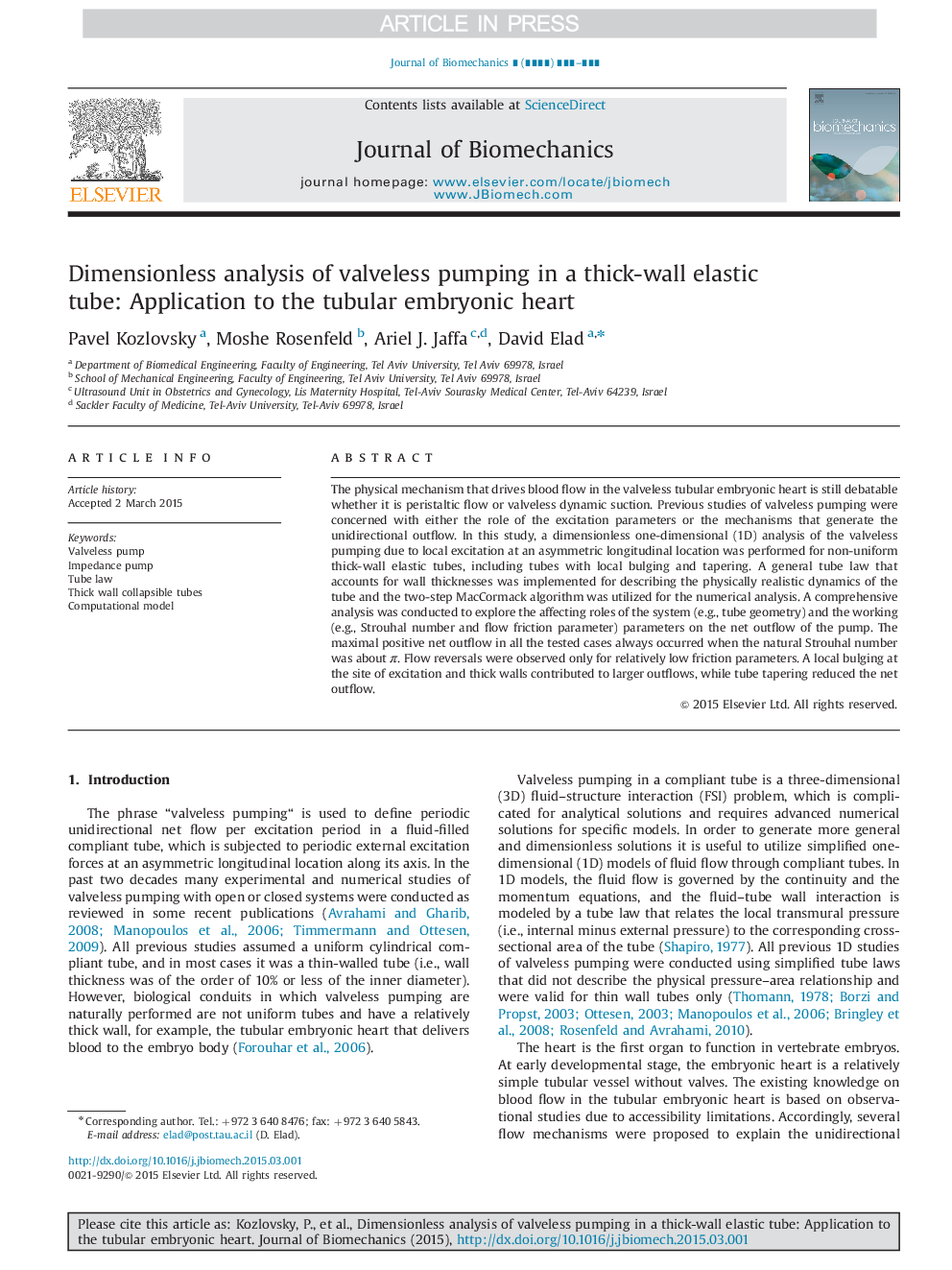| Article ID | Journal | Published Year | Pages | File Type |
|---|---|---|---|---|
| 10431369 | Journal of Biomechanics | 2015 | 10 Pages |
Abstract
The physical mechanism that drives blood flow in the valveless tubular embryonic heart is still debatable whether it is peristaltic flow or valveless dynamic suction. Previous studies of valveless pumping were concerned with either the role of the excitation parameters or the mechanisms that generate the unidirectional outflow. In this study, a dimensionless one-dimensional (1D) analysis of the valveless pumping due to local excitation at an asymmetric longitudinal location was performed for non-uniform thick-wall elastic tubes, including tubes with local bulging and tapering. A general tube law that accounts for wall thicknesses was implemented for describing the physically realistic dynamics of the tube and the two-step MacCormack algorithm was utilized for the numerical analysis. A comprehensive analysis was conducted to explore the affecting roles of the system (e.g., tube geometry) and the working (e.g., Strouhal number and flow friction parameter) parameters on the net outflow of the pump. The maximal positive net outflow in all the tested cases always occurred when the natural Strouhal number was about Ï. Flow reversals were observed only for relatively low friction parameters. A local bulging at the site of excitation and thick walls contributed to larger outflows, while tube tapering reduced the net outflow.
Keywords
Related Topics
Physical Sciences and Engineering
Engineering
Biomedical Engineering
Authors
Pavel Kozlovsky, Moshe Rosenfeld, Ariel J. Jaffa, David Elad,
